With multi-device search it should be now a priority to specifically identify the search behavior of our audience at a more granular level, segmenting per device type, allowing us to not only establish opportunities to connect with them, but also by using the identified specific needs to inform and improve our device specific offering, functionality and experience based on them; which can be the key to grow our mobile specific product or service.
Last year Google addressed this by publishing an infographic called “4 new moments each marketer should know” which are new trends of search behaviors from the usage of mobile device -that they also call “micromoments“-:
- “I-want-to-know”: when doing informational research.
- “I-want-to-go”: local related searches.
- “I-want-to-do”: with how-to type of searches.
- “I-want-to-buy”: with transactional queries, sometimes when visiting a local store.
Here’s some of the key data Google shares in the infographic based on their mobile behavior research:
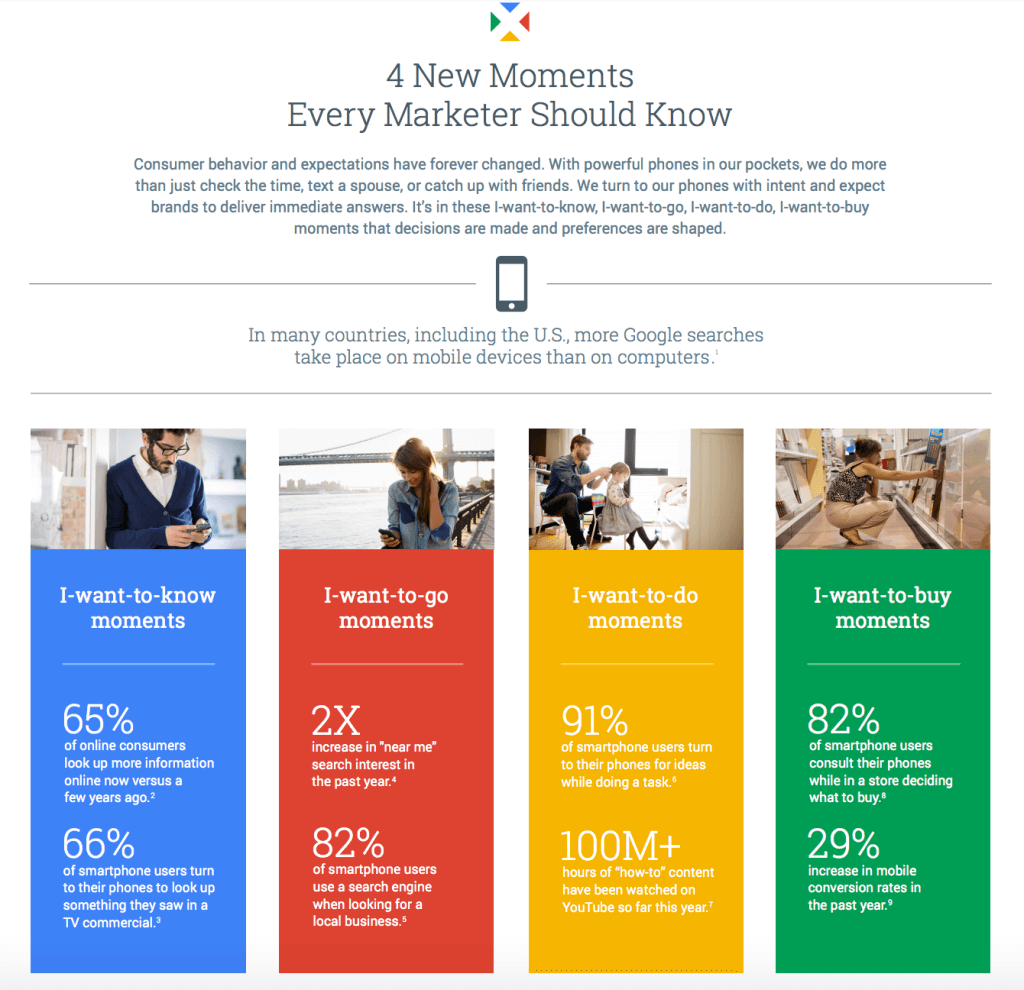
They have of course already started to fulfill this need with their own ad offering, for example, with a “Nearby Business” mobile ad format including directions and click to call.
But the question really is: Are you already leveraging these trends when doing mobile SEO? And even more important:
Are you looking for more of them: Identifying specific patterns & trends among your own mobile audience to capitalize on & use to grow your mobile presence?
Let’s take for example the “near me” search term that Google mentioned in its study that it had doubled the year before, since 82% of smartphone users search when looking for a local business.
When analyzing with SEMrush (with a mobile filter for the US) we can easily see its variations -highly focused on local type of businesses and services, from restaurants to liquor store, hotels and gas statios- in mobile and its impressive growth trend:
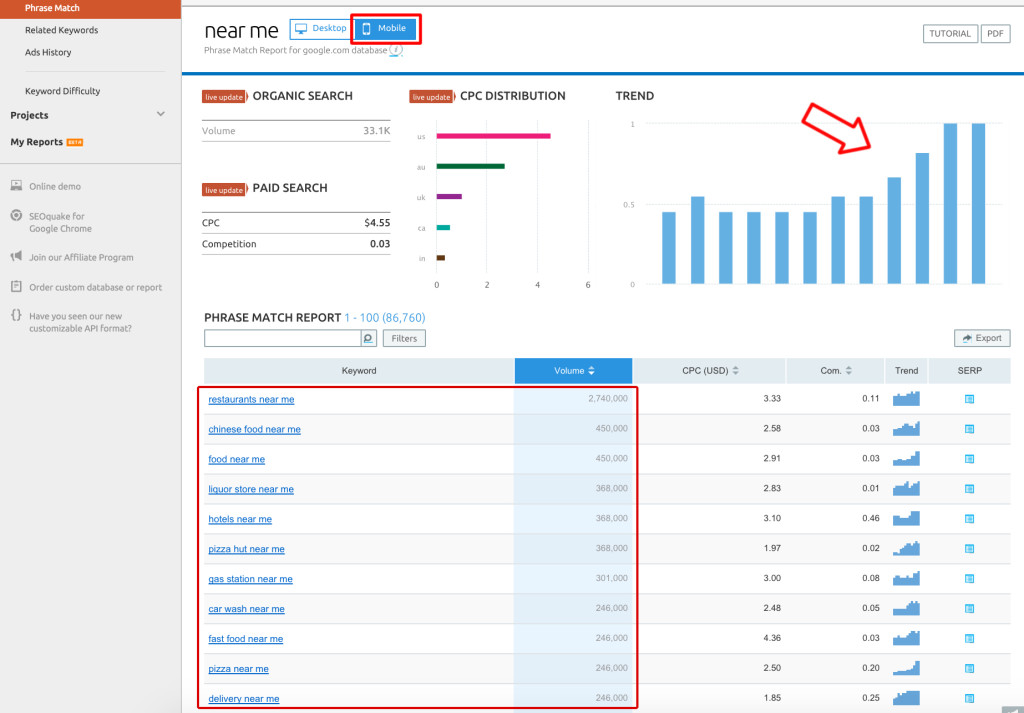
The same can also be found with any other tool, that besides relevant terms suggestions and search volume shows the search volume trend, like KWfinder:
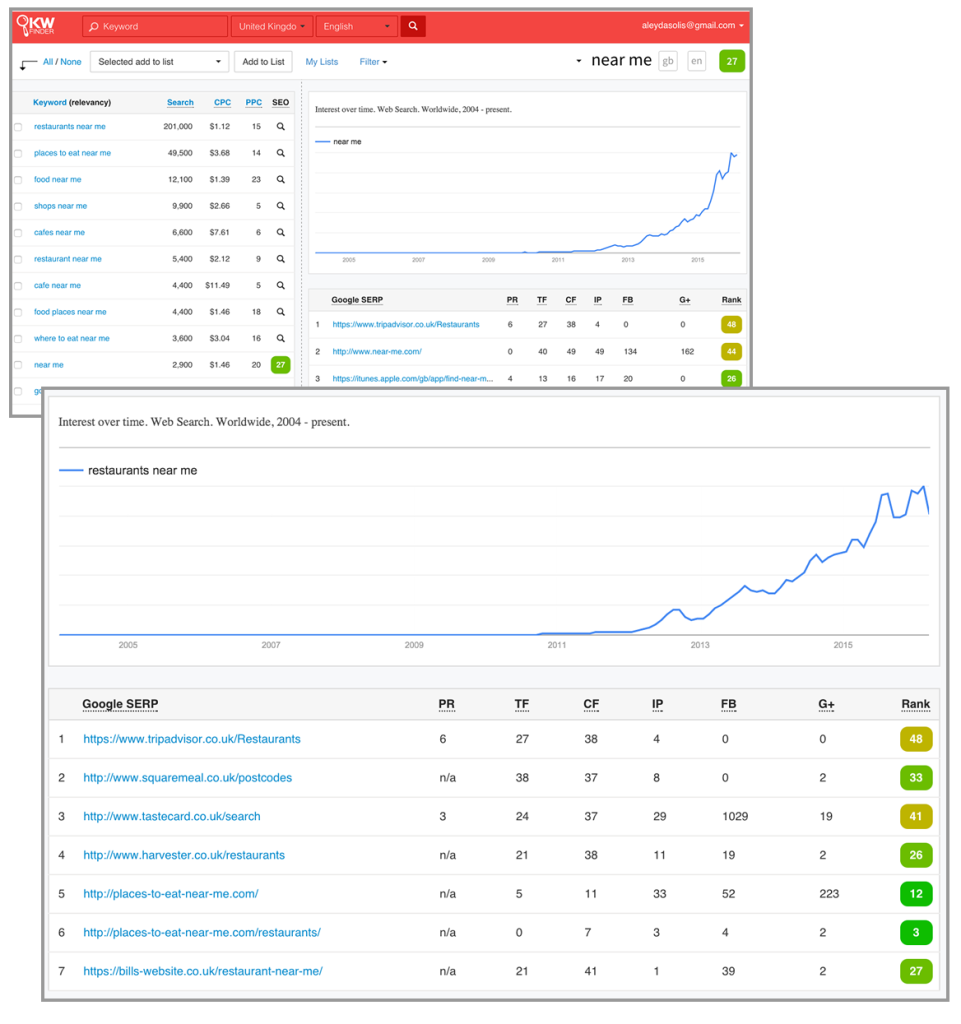
You can see the trend is huge! However, is it really because of mobile? You can easily validate this with Google’s own keyword planner device segmentation functionality, which is very clear in the case of the “near me” related terms, both in current device share and growth trend:
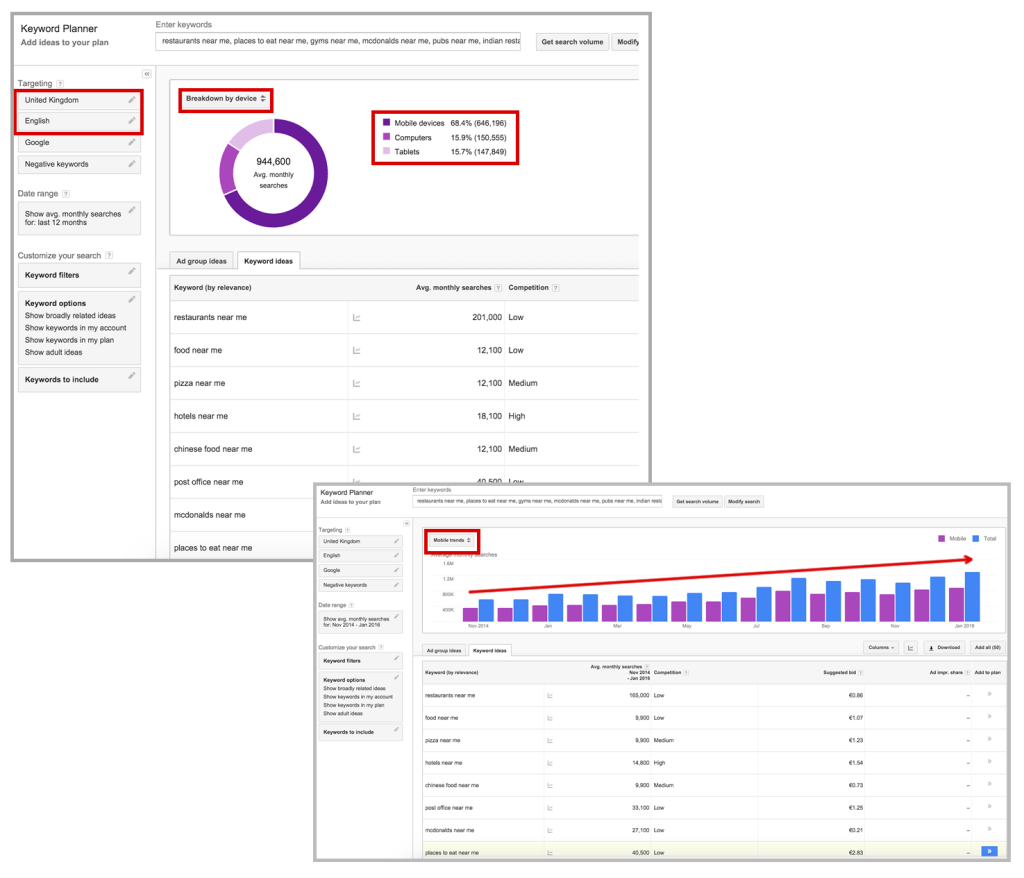
Nice right? Who’s targeting these type of queries and capitalizing on these opportunities already? Some big players such as TripAdvisor are already, however, you can see that when validating the mobile search results for a few of these, in most cases the top ranked sites are still not doing it:
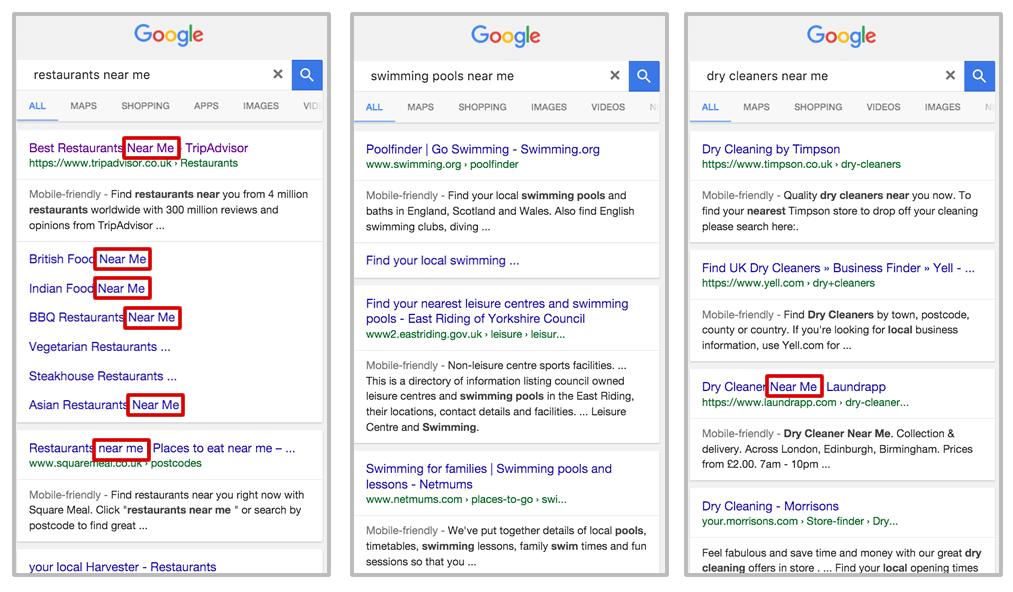
This is great! Before moving on though, a quick reminder: verifying your mobile search results might be a really good idea to “refine” your term targets & priorities, since besides the search volume, trend and level of competition, it’s key to take into consideration the type of visibility that you would end-up having there, especially in mobile search results with local focused searches with map integration -that will affect the CTR behavior of the user- (or with “how to” queries for videos, which can also be an input to establish the best format for your content).
This can be easily identified with SearchMetrics universal search integrations or the new SEMrush SERP features functionalities to better prioritize your term targets:
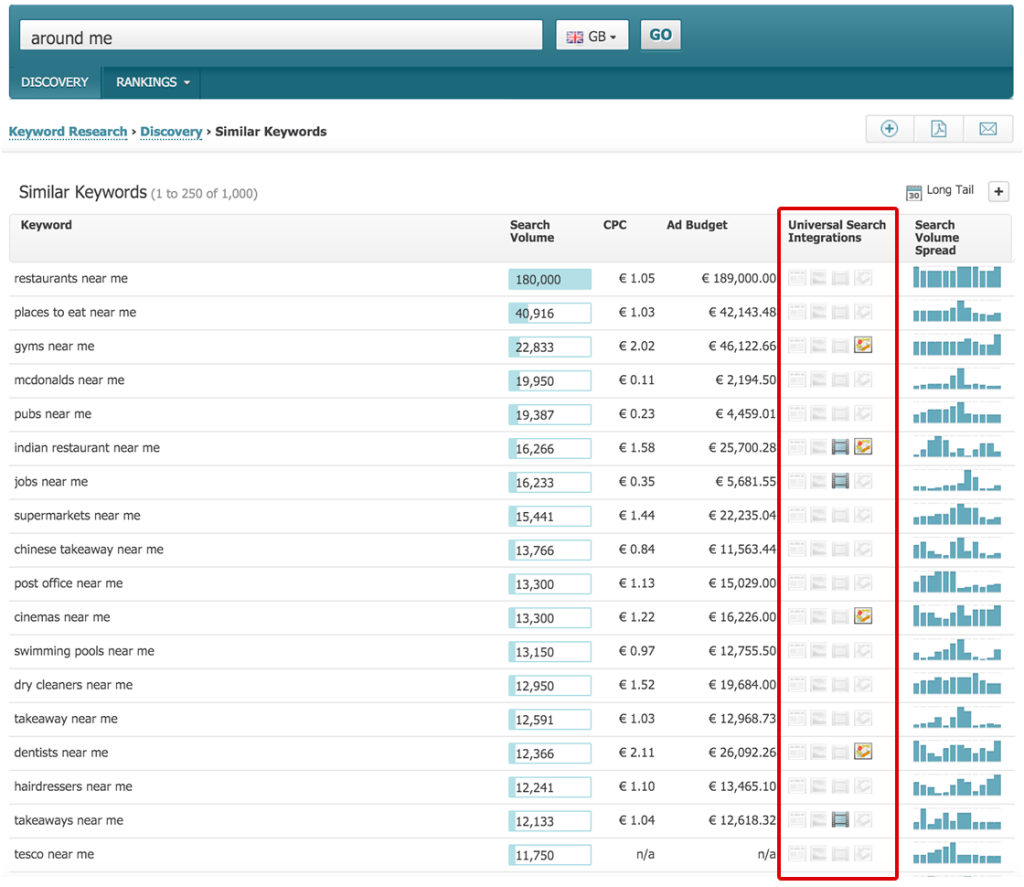
Let’s come back to our main point though: It’s certainly impressive what is happening with the “near me” queries, and you can certainly start using them if your a local based business.
However, how can you identify additional, highly relevant mobile search patterns?
Tools like the previously mentioned kwfinder, keywordtool.io and huballin are amazing sources of long-tail type of permutations that will allow you to identify the usage of terms such as “open on”, “prices”, “hours”, “same day”, “location”, “reviews”, which you can later validate with the Google keyword planner the device search share, as well with your own currently ranking keywords data with the Google Search Console or third party indexes as SEMrush, SimilarWeb, Sistrix, etc. to look for them.
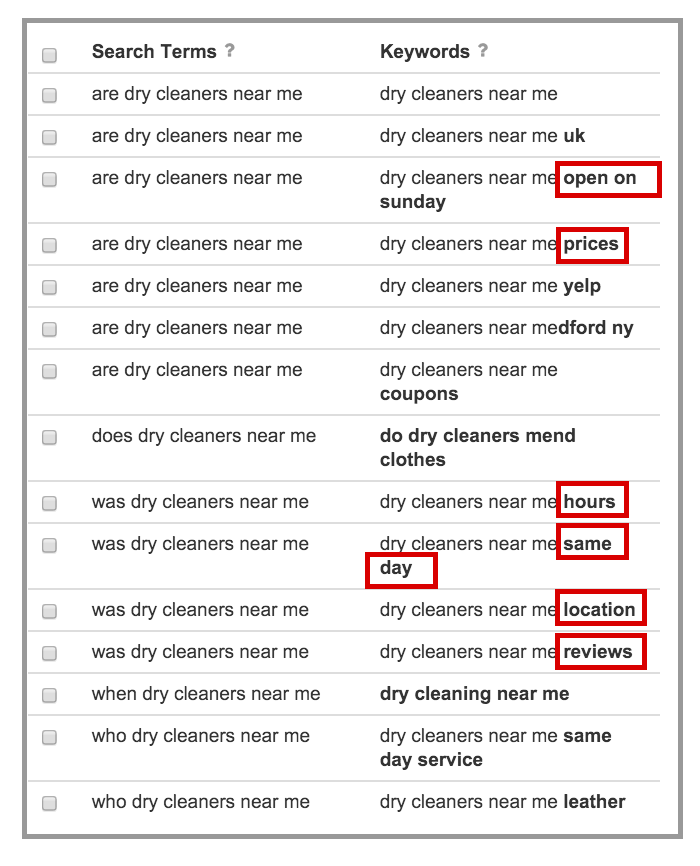
The results that you can achieve based on their usage can be non-trivial over time when you aggregate all of their search volume. For example, you can see the “near me” results for a local targeted site when having a 6.7 average position -still a work in progress- and a total of 249,793 impressions and how the numbers compare for mobile vs. desktop:
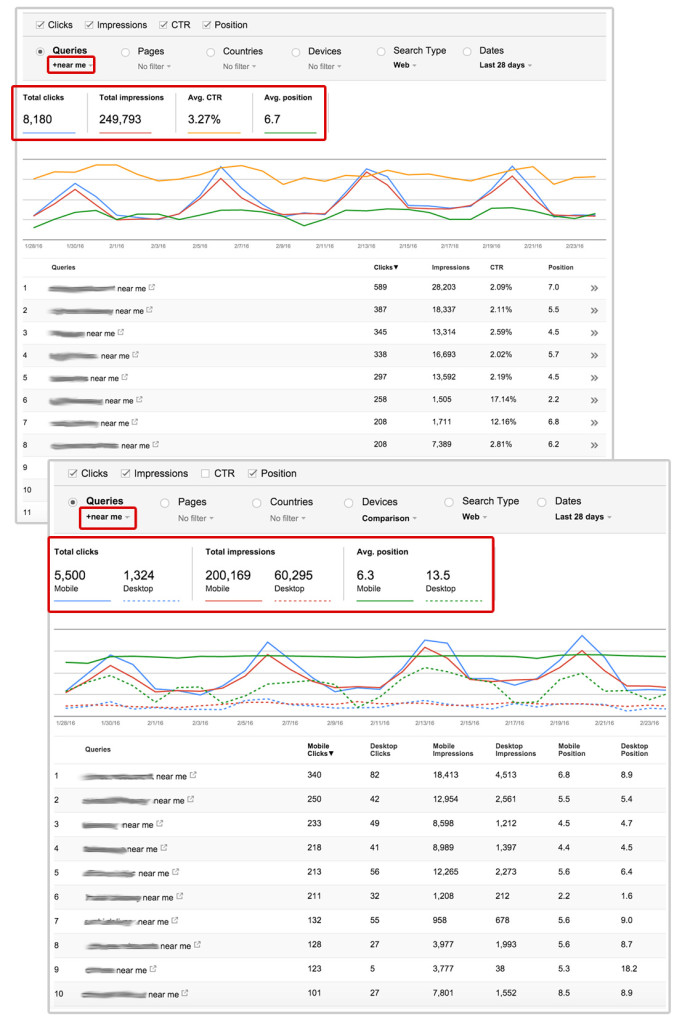
This is true also for other type of queries, such as those related to “(phone) numbers” -which you likely search for during a “I want to do” moment- and for which you can see that the impressions and clicks mobile to desktop gap is higher than the average position one.
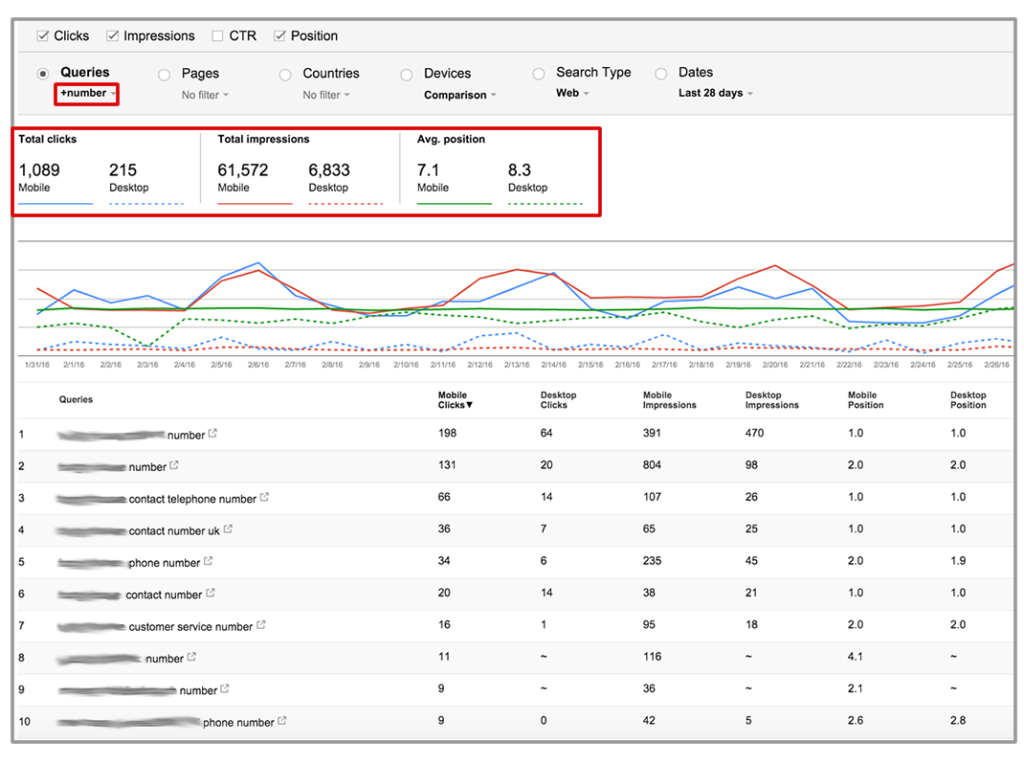
And I have also leveraged this trend in other language and country markets too; where queries patterns based on the type of business might also change, when searching for the businesses “teléfono”, telephone in Spanish, for example:
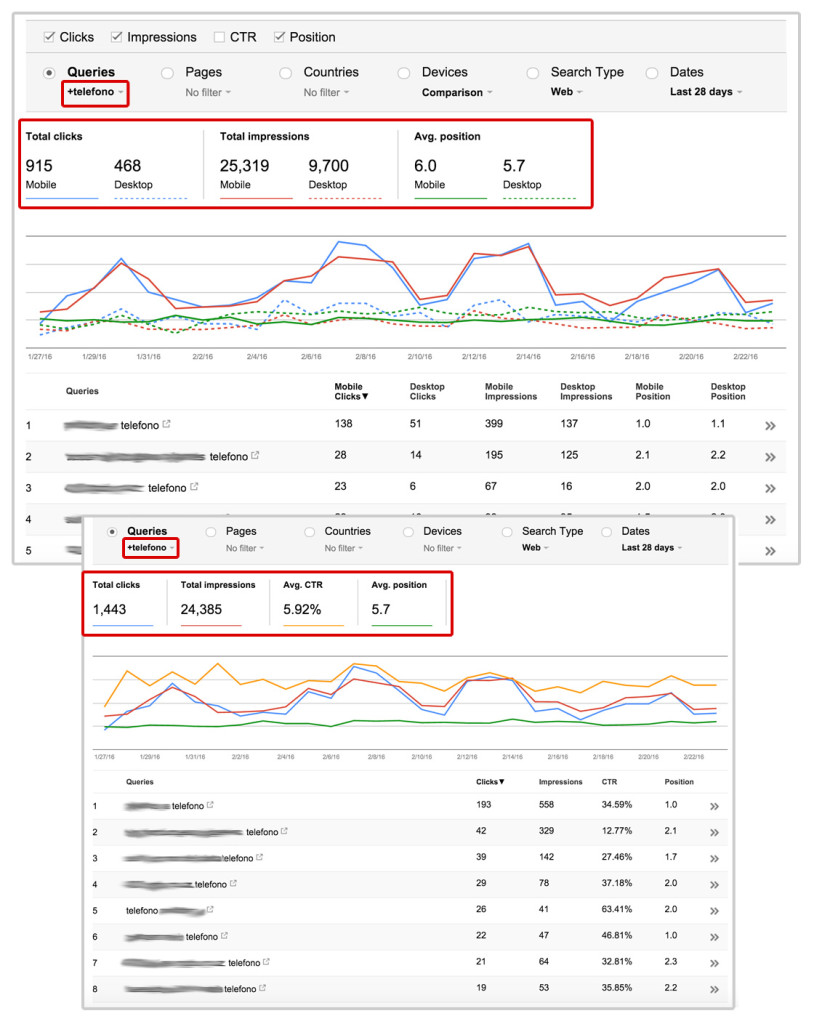
Or when searching for terms related to “prices” both in English and Spanish, to target a “want-to-know” moment:
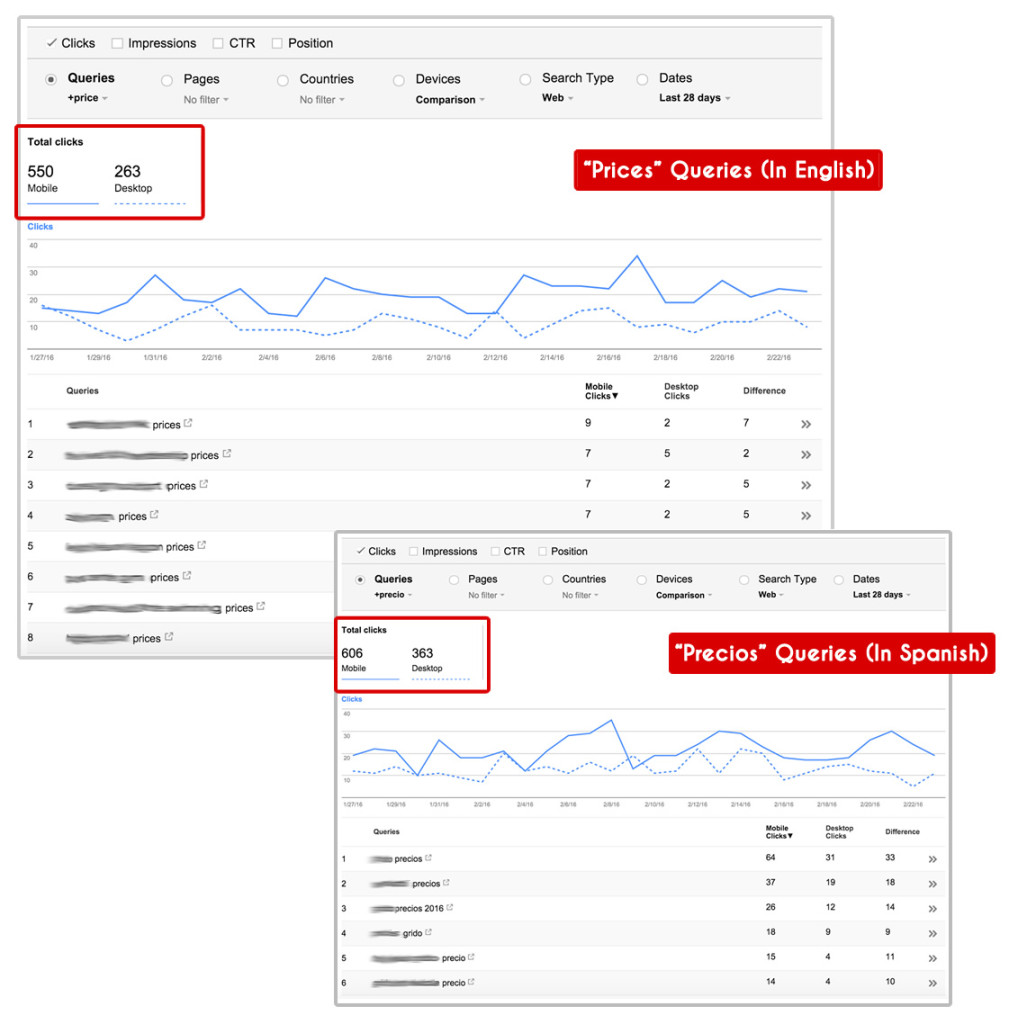
Of course, if you only target one of these query patterns the results will be likely trivial, however, when you target them at an aggregated basis, by identifying and addressing many of them, not only by offering optimized content but an overall highly targeted experience, your mobile search results will soon become as or even more important than the desktop ones:
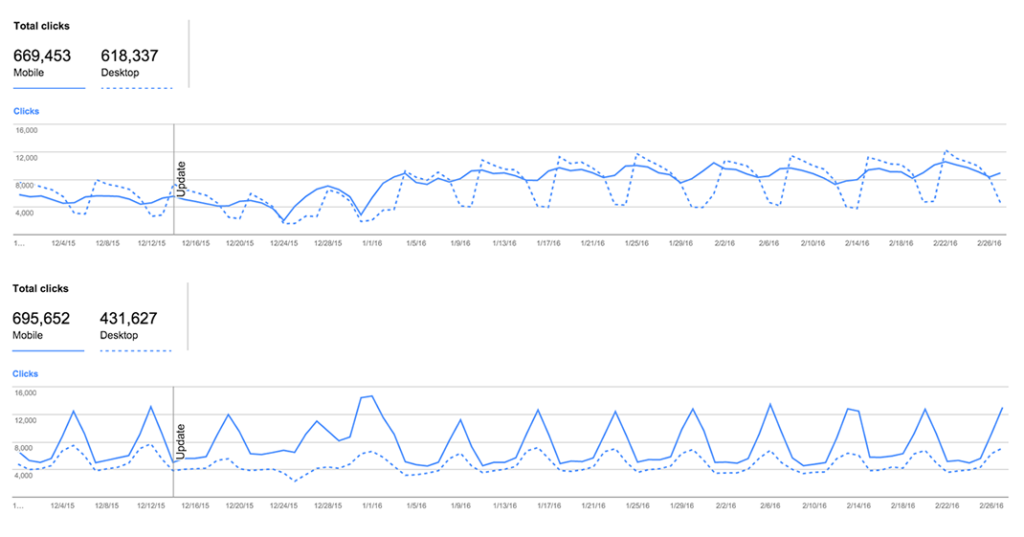
There’s huge still not targeted mobile search opportunity to make the most out of those “micromoments” of your audience. It’s now your own moment to start growing with those mobile queries “near” you!
PS: Do you want more mobile Web & app optimization opportunities?
If you’re interested on learning how to establish a mobile Web & app optimization strategy by identifying more search opportunities, check out the Mobile SEO Webinar I did a couple of weeks ago with WebPromo Experts (with the slides) including more questions to ask and aspects to validate when analyzing our Mobile presence.